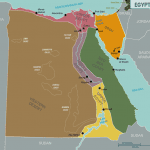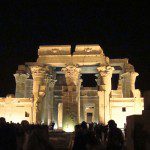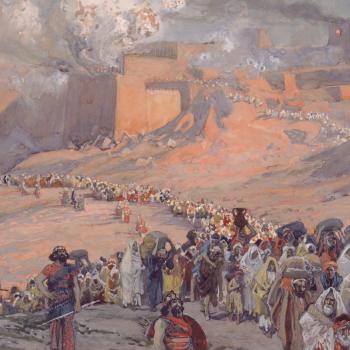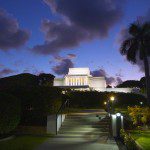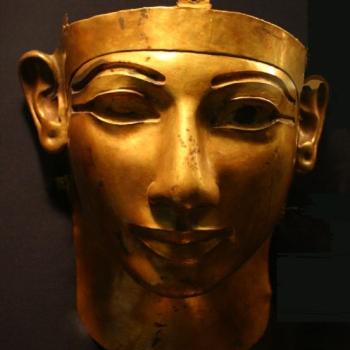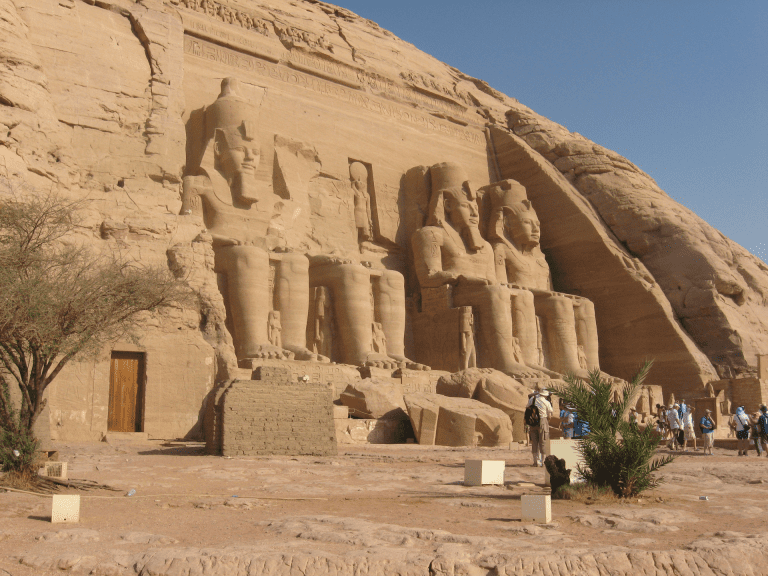
(Wikimedia Commons public domain image)
The companion temple that Ramses dedicated to his wife Nefertari — which is mostly about himself — is located roughly a hundred yards away to the right.
We were up at 3 AM this morning for the 3.5 hour drive (each way) from Aswan to the remarkable temples of Ramses II and Nefertari at Abu Simbel. The landscape between Aswan and Abu Simbel is absolutely flat and barren, making the familiar drive through the Mojave Desert in California look like a tropical rainforest by comparison. Afterwards we stopped by the famous Aswan High Dam and its predecessor and visited the marvelous Temple of Isis at Philae on its island. The temples of Isis, Ramses II, and Nefertari were among those that were rescued from the rising waters of Lake Nasser after the controversy-ridden completion of the High Dam.
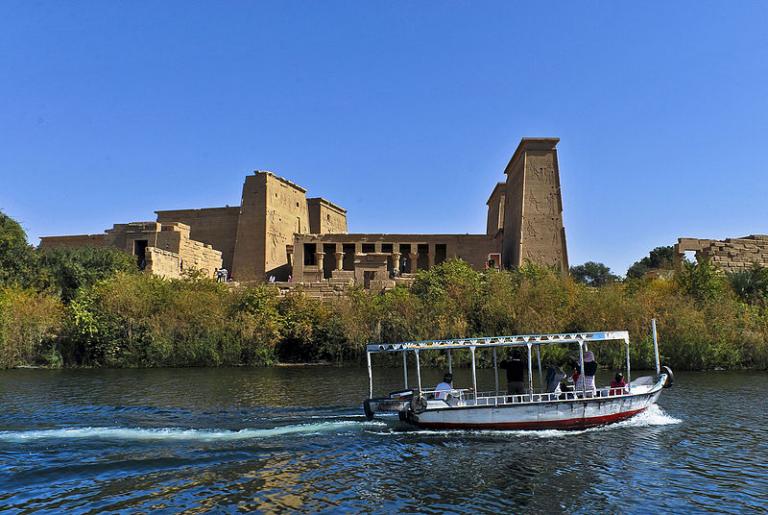
Back in April, I received a hard copy of BYU Studies Quarterly 61/4 (2022) in the mail. A special — issue of BYU Studies, it was created by Stephen O. Smoot, John Gee, Kerry Muhlestein, and John S. Thompson, and is entitled A Guide to the Book of Abraham. (Earlier, I had kindly been given an electronic copy to read.) A Guide to the Book of Abraham represents something of a state-of-the-question survey from the perspective of four faithful Latter-day Saint scholars who have particular training in Egyptology.
Here are some further notes from the volume, from a short chapter entitled “The Fall of Lucifer” (163-167). First, though, I remind you of a relevant scriptural passage:
And there stood one among them that was like unto God, and he said unto those who were with him: We will go down, for there is space there, and we will take of these materials, and we will make an earth whereon these may dwell;
And we will prove them herewith, to see if they will do all things whatsoever the Lord their God shall command them;
And they who keep their first estate shall be added upon; and they who keep not their first estate shall not have glory in the same kingdom with those who keep their first estate; and they who keep their second estate shall have glory added upon their heads for ever and ever.
And the Lord said: Whom shall I send? And one answered like unto the Son of Man: Here am I, send me. And another answered and said: Here am I, send me. And the Lord said: I will send the first.
And the second was angry, and kept not his first estate; and, at that day, many followed after him. (Abraham 3:24-28)
A Guide to the Book of Abraham has this to say on the subject:
While later biblical and extrabiblical writings from the first millennium BC contain reworked allusions to pervasive Near Eastern myths about the fall of rebellious deities or angels (for example, Gen. 6:1-4; Isa. 14; Job 38; Ps. 82; Ezek. 28:1-10; 28:11-19; and Dan. 11-12), a fair question to ask is whether this mythic archetype is attested in Near Eastern literature from Abraham’s day. Well, In fact there does appear to be evidence for elements of this mythic concept in the literature of earlier Near Eastern cultures.
Biblical scholar Mark Smith has recently drawn attention to the “basic idea” underlying the myth of the “conflict between competing deities in the divine realm” being present in texts from the Middle and Late Bronze Age sites of Mari and Ugarit. “These cases of divine conflict are set in the divine council that meets in heaven; they end in the demotion or expulsion of the defeated deity.” (163-164)
As scholars recognize, this text [a letter from the king of Mari dating to circa 1775 to 1760 BC] clearly depicts a divine-council scene where “a denial of the right of [another deity] to rule” is issued by the edict of a superior deity. As such, it provides broad parallel with and precedent to later biblical texts that depict the fall of rebellious divinities, as well as to the Book of Abraham.
Turning to the material from Ugarit, the Late Bronze Age text known as the Baal Cycle depicts “cases of divine conflict [which] are set in the divine council that meets in heaven; they end in the demotion or expulsion of the defeated deity. (164-165)
The common elements in these ancient Near Eastern and Anatolian myths and the Book of Abraham include the divine council as the setting, the involvement of multiple divinities or gods, some kind of attempt to supplant or overthrow the chief deity of the council in an overt act of rebellion or defiance,* and the ultimate humiliation or downfall of the rebellious character.
From this and other evidence, “several striking affinities with Semitic traditions are immediately available in the Book of Abraham. As seen above, “the council scene in particular is consistent with a standard motif in Mesopotamian and Ugaritic literature, wherein a divine assembly convenes to consider a problem and a series of proposals is offered. This in turn reinforces the overall sense of antiquity and historical believability of the book. (166)
A note to the passage quoted immediately above has this to say:
The Book of Abraham does not make this point as explicitly as other Restoration scripture, such as the book of Moses, which depicts Satan as seeking “to destroy the agency of man, which . . . the Lord God, had given him,” and also demanding “that [God] should give unto him [his] own power.” This Satan does by proclaiming, “Behold, here am I, send me, I will be thy son, and I will redeem all mankind, that one soul shall not be lost, and surely I will do it; wherefore give me thine honor (Moses 4:1, 3). Nevertheless, the implication that Satan is actively rebelling against God in the Book of Abraham can be seen in his being described as “angry” at God’s decision to choose the one “like unto the Son of Man.” Additionally, that “many followed after [Satan]” (Abr. 3:27-28) also suggests a collective act of rebellion. (166 note 16)
Posted from Aswan, Egypt


